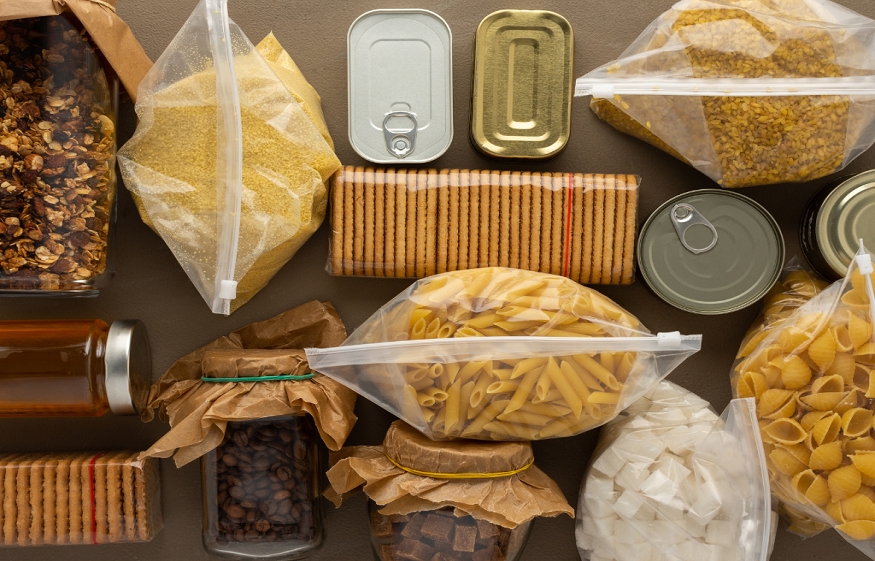 Food packaging plays a crucial role in preserving, protecting, and presenting food products to consumers. Whether it’s a bag of chips, a carton of milk, or a frozen meal, the packaging material used can impact the product’s shelf life, safety, and even taste. As the food industry continues to evolve, new packaging technologies are emerging to meet consumer demands for convenience, sustainability, and hygiene. However, not all packaging materials are created equal, and understanding their properties is vital for businesses, consumers, and environmental advocates alike.
Food packaging plays a crucial role in preserving, protecting, and presenting food products to consumers. Whether it’s a bag of chips, a carton of milk, or a frozen meal, the packaging material used can impact the product’s shelf life, safety, and even taste. As the food industry continues to evolve, new packaging technologies are emerging to meet consumer demands for convenience, sustainability, and hygiene. However, not all packaging materials are created equal, and understanding their properties is vital for businesses, consumers, and environmental advocates alike.
From plastic wraps to biodegradable containers, different materials offer unique advantages and challenges. Some ensure better freshness, while others are chosen for their cost-effectiveness or recyclability. In this article, we’ll explore ten essential things you need to know about food packaging materials—covering safety, sustainability, regulations, and the latest innovations shaping the future of packaging.
1.The Purpose of Food Packaging
Food packaging is not just about aesthetics—it serves multiple critical functions. It protects food from contamination, prevents spoilage, extends shelf life, and provides essential product information such as nutritional facts and expiration dates. Proper packaging also ensures food remains fresh and intact during transportation and storage, reducing food waste and enhancing consumer convenience.
2. Types of Food Packaging Materials
Food packaging materials come in various forms, including:
Plastics – Lightweight and durable but raise environmental concerns.
Glass – Non-reactive and reusable but heavy and fragile.
Metal (Aluminum, tinplate) – Ideal for canned foods but can be expensive.
Paper & Cardboard – Biodegradable and recyclable but not suitable for all foods.
Biodegradable & Compostable Materials – Eco-friendly but sometimes costly and less durable.
3. Safety Regulations and Compliance
Food packaging materials must meet strict regulatory standards to ensure consumer safety. Different countries have agencies like the FDA (USA), EFSA (Europe), and FSSAI (India) that oversee food contact materials. These organizations regulate the use of chemicals, migration limits, and overall safety of packaging materials to prevent contamination and health hazards.
4. The Impact of Plastic Packaging
Plastic remains the most widely used food packaging material due to its versatility and affordability. However, it has significant downsides, including environmental pollution and potential health risks from chemical leaching. Many companies are now exploring bioplastics, recyclable plastics, and plastic-free alternatives to address these concerns.
To address these issues, many companies are now shifting toward eco-friendly alternatives such as bioplastics, recyclable plastics, and plastic-free packaging. Bioplastics, derived from renewable sources like cornstarch and sugarcane, offer a more sustainable option. Meanwhile, improved recycling technologies and innovations in compostable packaging are helping to reduce plastic waste. As awareness grows, the packaging industry is evolving toward greener, safer solutions for food packaging.
5. Innovations in Sustainable Packaging
The demand for sustainable packaging is growing rapidly. Companies are developing edible packaging, plant-based materials, and smart packaging that indicate food freshness. Some brands are also shifting to minimalist packaging to reduce waste, using paper-based wraps, mushroom-based containers, and seaweed films as alternatives to conventional materials.
6. The Role of Packaging in Food Shelf Life
Different materials affect food preservation differently. For example:
Vacuum-sealed plastic pouches prevent oxygen exposure, keeping food fresh longer.
Aluminum cans provide excellent barrier properties for preserving canned foods.
Glass jars help retain the flavor and nutrients of products like sauces and jams.
The right packaging material can significantly reduce food spoilage and waste.
7. The Cost Factor in Packaging Choices
Eco-friendly packaging materials are gaining traction as consumers and businesses become more environmentally conscious. However, the shift toward sustainability comes with financial challenges. Traditional plastic packaging remains the most cost-effective option due to its low production costs, durability, and ease of mass production. This affordability makes plastic the preferred choice for many businesses, especially small and medium enterprises looking to maintain competitive pricing.
On the other hand, biodegradable and recyclable materials often come with higher manufacturing costs. Factors such as specialized raw materials, complex production processes, and limited availability contribute to their increased price. For example, compostable bioplastics derived from plants can be significantly more expensive than conventional petroleum-based plastics. Additionally, recycling systems require proper infrastructure, and not all materials can be effectively recycled, further increasing costs.
Despite these challenges, many companies are working toward balancing cost efficiency with sustainability goals. Brands are investing in research and development to create affordable biodegradable materials, while some governments are offering incentives for businesses adopting eco-friendly packaging. Consumers are also willing to pay a premium for sustainable products, encouraging businesses to make the switch. In the long run, advancements in technology and economies of scale will likely drive down costs, making sustainable packaging more accessible.
8. The Rise of Smart Packaging
Smart packaging from a flexible packaging company integrates technology to improve food safety and consumer experience. Examples include:
QR codes providing product traceability.
Time-temperature indicators that show if food has been exposed to unsafe temperatures.
Oxygen absorbers that extend shelf life by reducing oxidation.
These innovations help ensure food quality and safety while reducing waste.
9. Packaging Waste and Recycling Challenges
Despite increasing awareness, food packaging waste remains a significant problem. Many materials, especially multi-layered plastic and non-recyclable composites, end up in landfills or oceans. Countries and companies are working on better recycling systems, refillable packaging, and zero-waste alternatives to address this crisis.
10. The Future of Food Packaging
The future of food packaging is focused on sustainability, innovation, and consumer convenience. Expect to see more:
AI-driven packaging solutions to track freshness.
Edible films made from starch and protein.
Water-soluble packaging that dissolves without waste.
Reusable containers promoted by major food brands.
With advancing technology and consumer awareness, food packaging is evolving to be more eco-friendly, functional, and safe for both people and the planet.
Food packaging materials play an essential role in food safety, shelf life, and environmental impact. While plastics have dominated the industry for years, new innovations in biodegradable, compostable, and smart packaging are reshaping the future. Businesses and consumers alike must be mindful of the materials they use and their implications for health and sustainability. By embracing smarter and greener packaging solutions, we can contribute to a healthier planet while still enjoying safe and fresh food.





